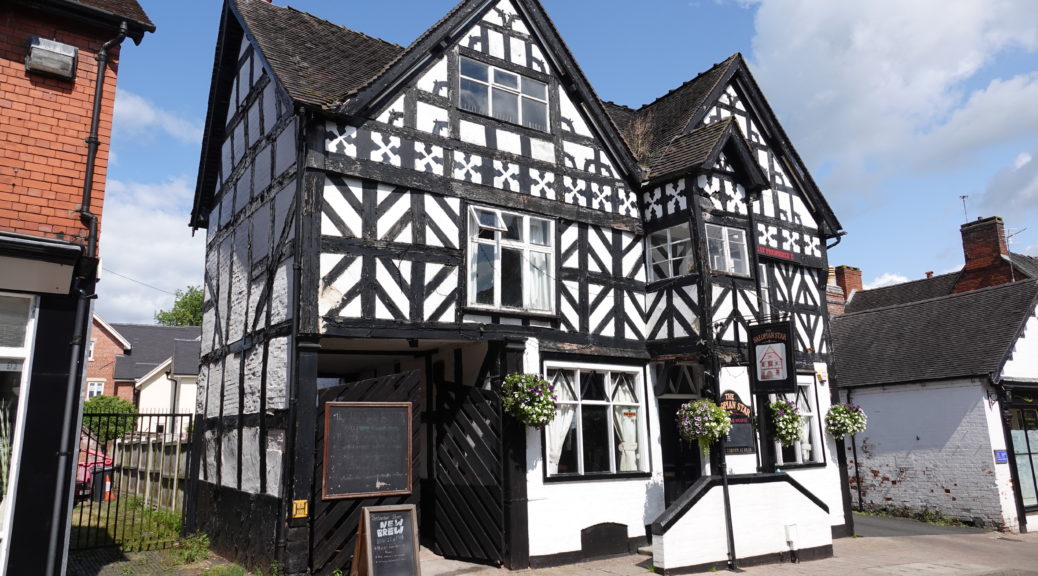
The Drayton Story
A five lock flight this morning brought us to Market Drayton just before lunchtime, which is just as well, as the local heritage museum closed at one. We made it there in time to meet the two charming volunteers who staff it, and learn all about the history of Market Drayton. The settlement was mentioned in the Domesday Book, became a market town in the 13th century, and was the birthplace of Clive of India.
For those who aren’t familiar with Robert Clive, he was pretty much British Imperialism incarnate, taking control of India for British commercial interests, and becoming a millionaire in the process. The museum has the school desk with his initials carved into it.

Legend has it that he carved them himself. That seems reasonable. Vandalizing school property is nothing compared to what he did to India.
However, Clive was not the offspring of Market Drayton I found most interesting. It was also the home of would be aviation pioneer Arthur Philips. In 1907 he patented a flying machine with propellors that could change direction from vertical to horizontal allowing vertical take off and landing. He envisioned a future in which everyone would live in flat roofed houses with the street numbers painted on top so they would know where to land their personal aircraft.
Implementing this innovative design proved challenging. By 1909 he had a half sized unmanned model aircraft ready to test. The great day came, and he could not get the engine started. He turned his back in disgust and was stalking away, when a gust of wind turned the propellors and started the engine. The plane lurched into the air and collided with a beech tree.
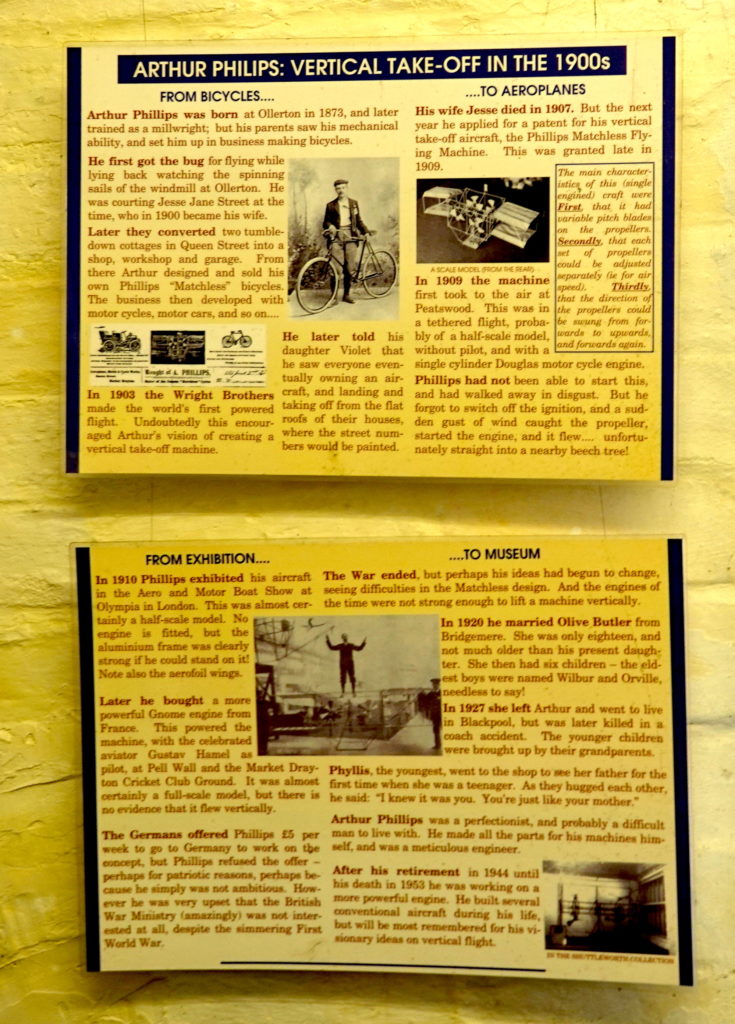
Market Drayton was also a center of the gingerbread business.

The first mention of gingerbread baking there dates back to 1793, and there is a local recipe from the 19th century that is still in use commercially today.
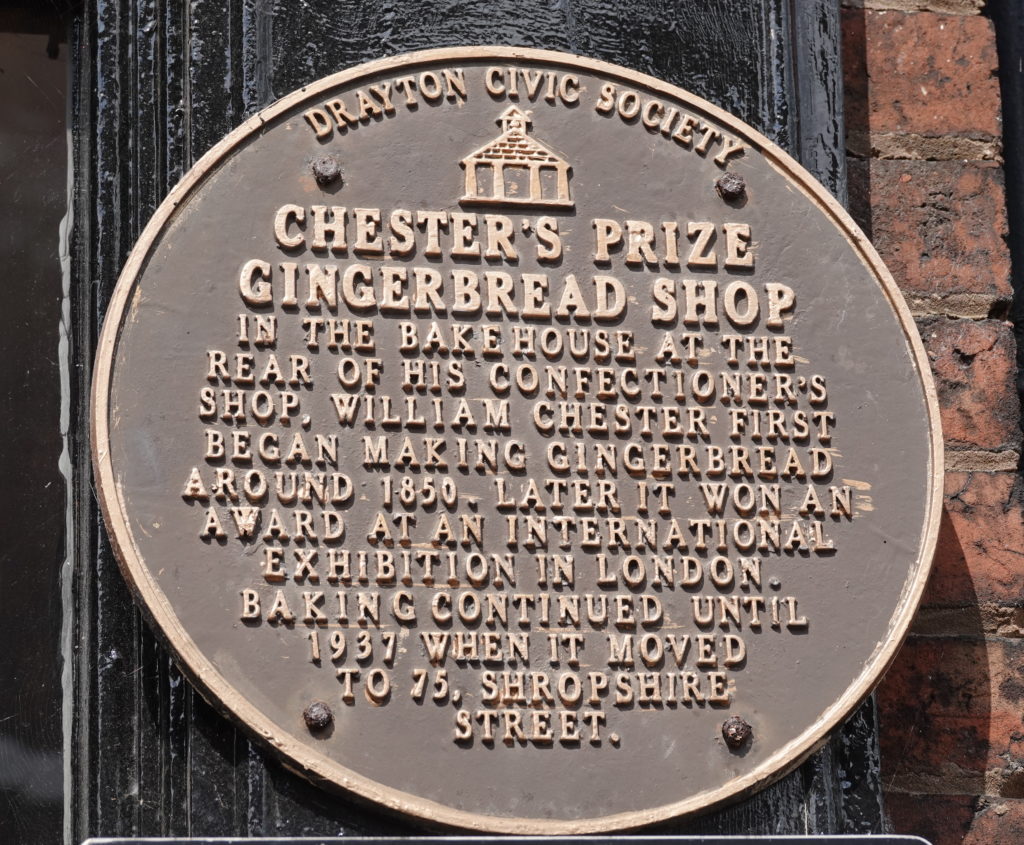
Here’s a couple more corners of the museum.
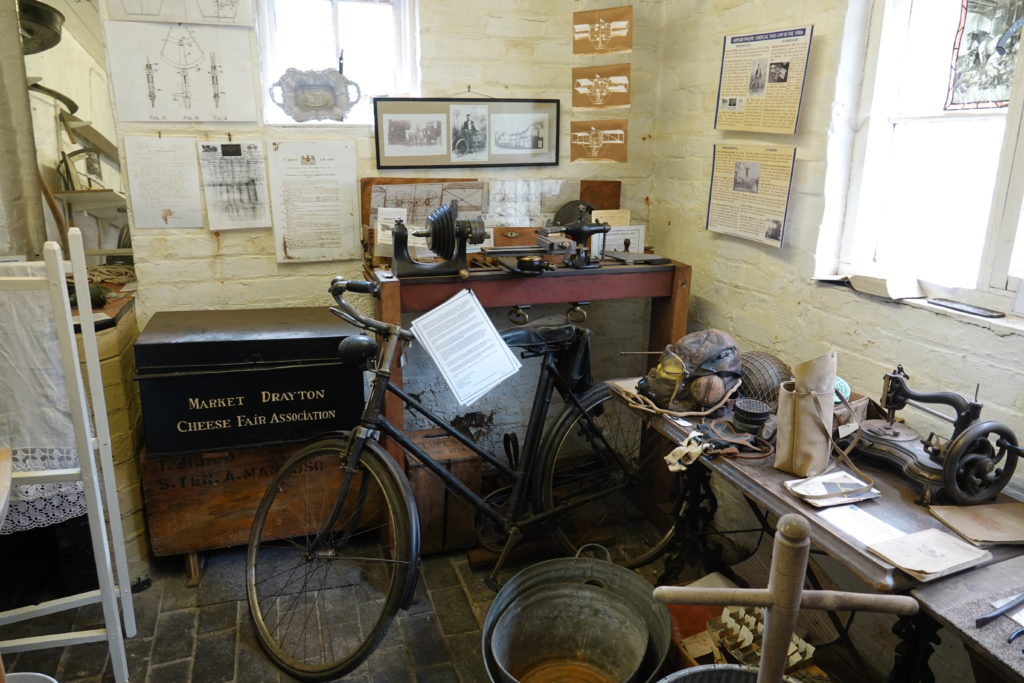
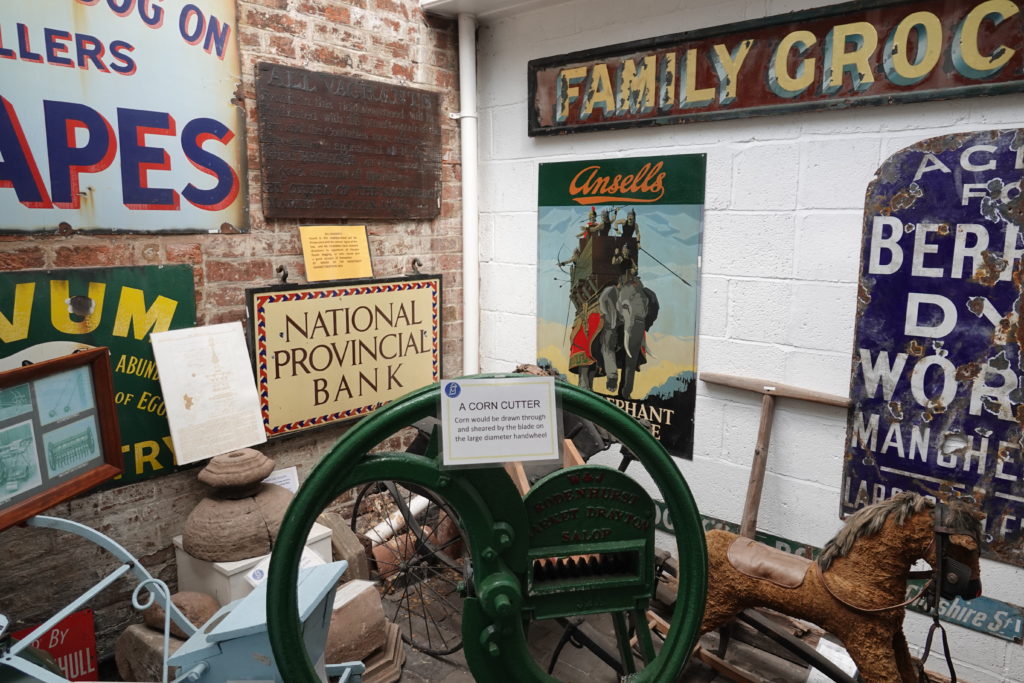
Oh, look. There’s a vintage diabolo!

Market Drayton also has some nice looking Tudor pubs.

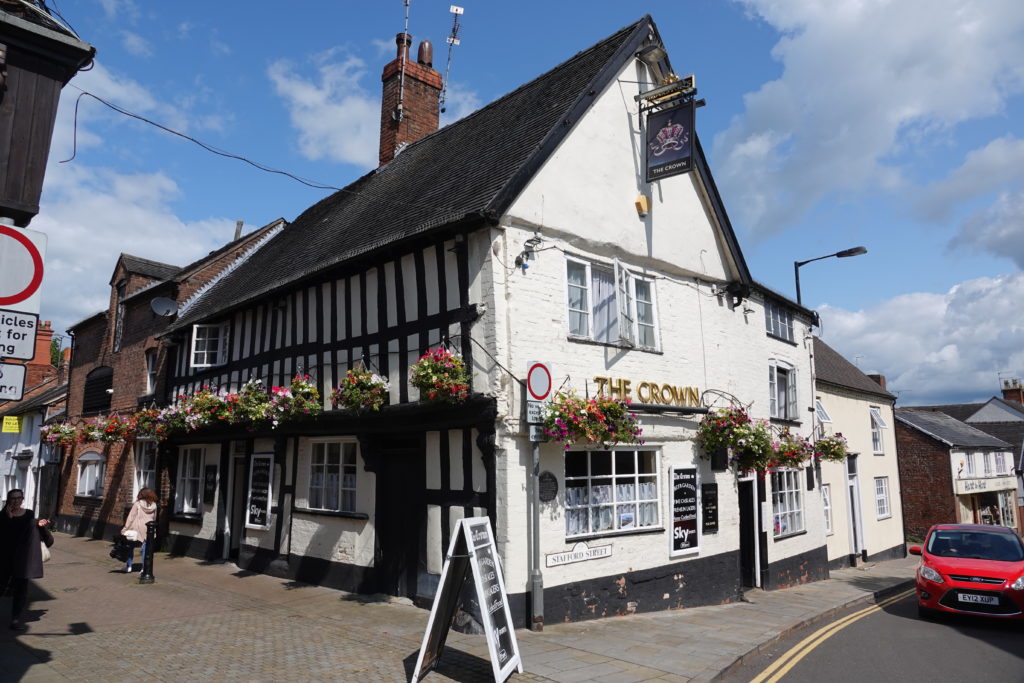

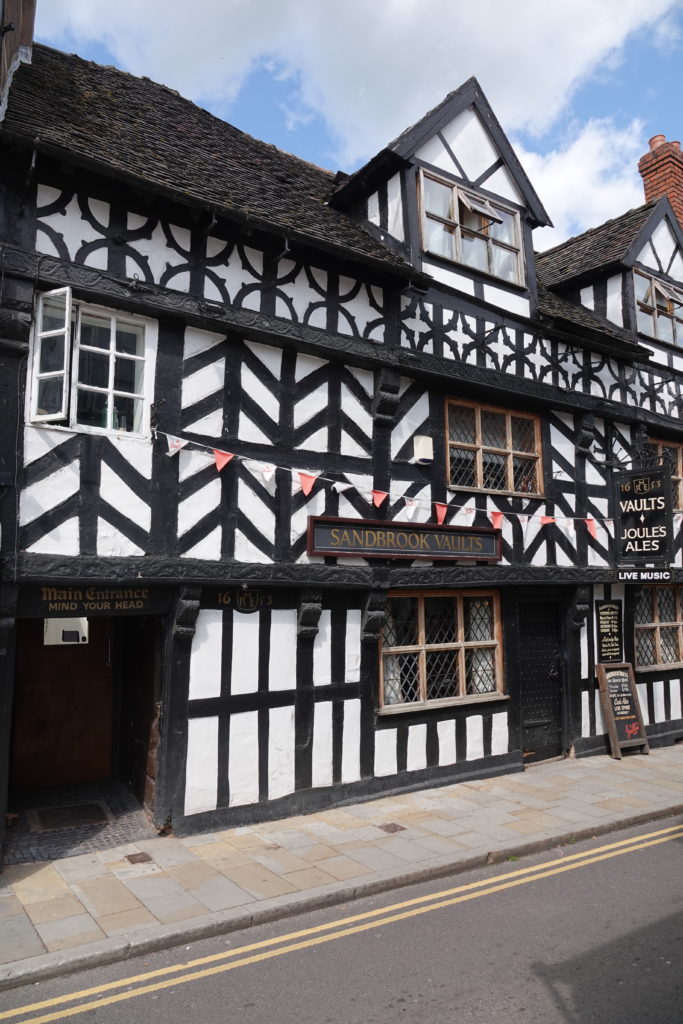
Five more locks after lunch, and then long cutting. Telford built canals as straight as he could and made embankments and cuttings as required to keep them level.

We now have a couple of days with no locks, and then a flight of twenty one to get to Wolverhampton.